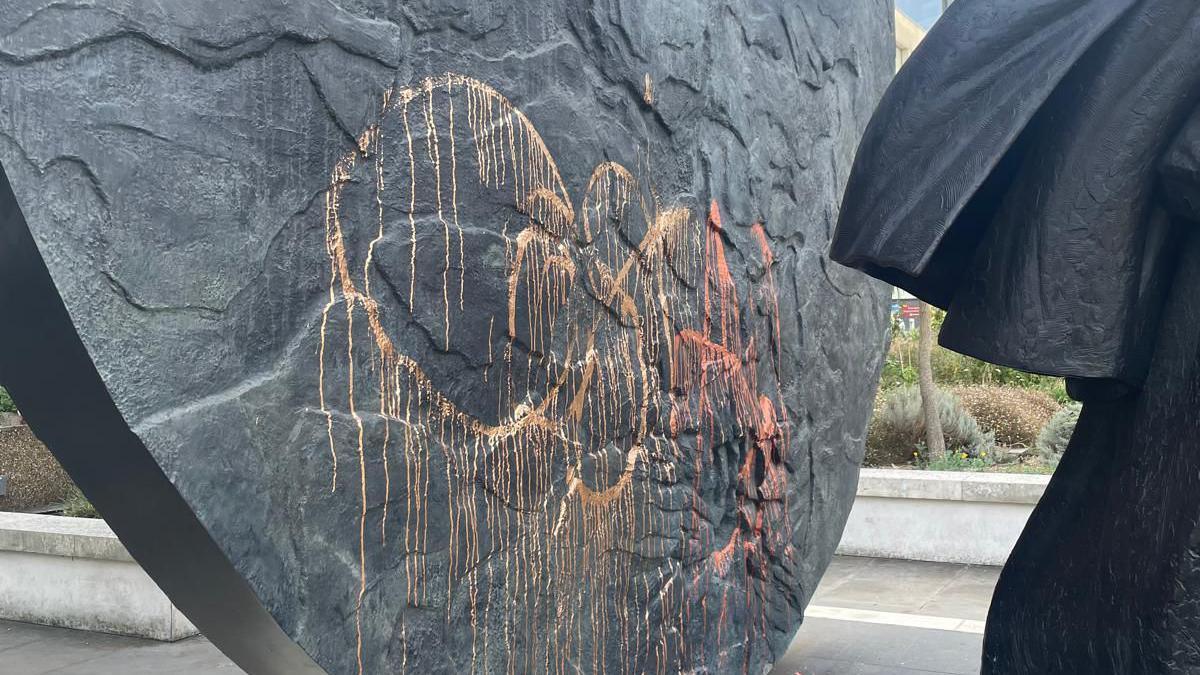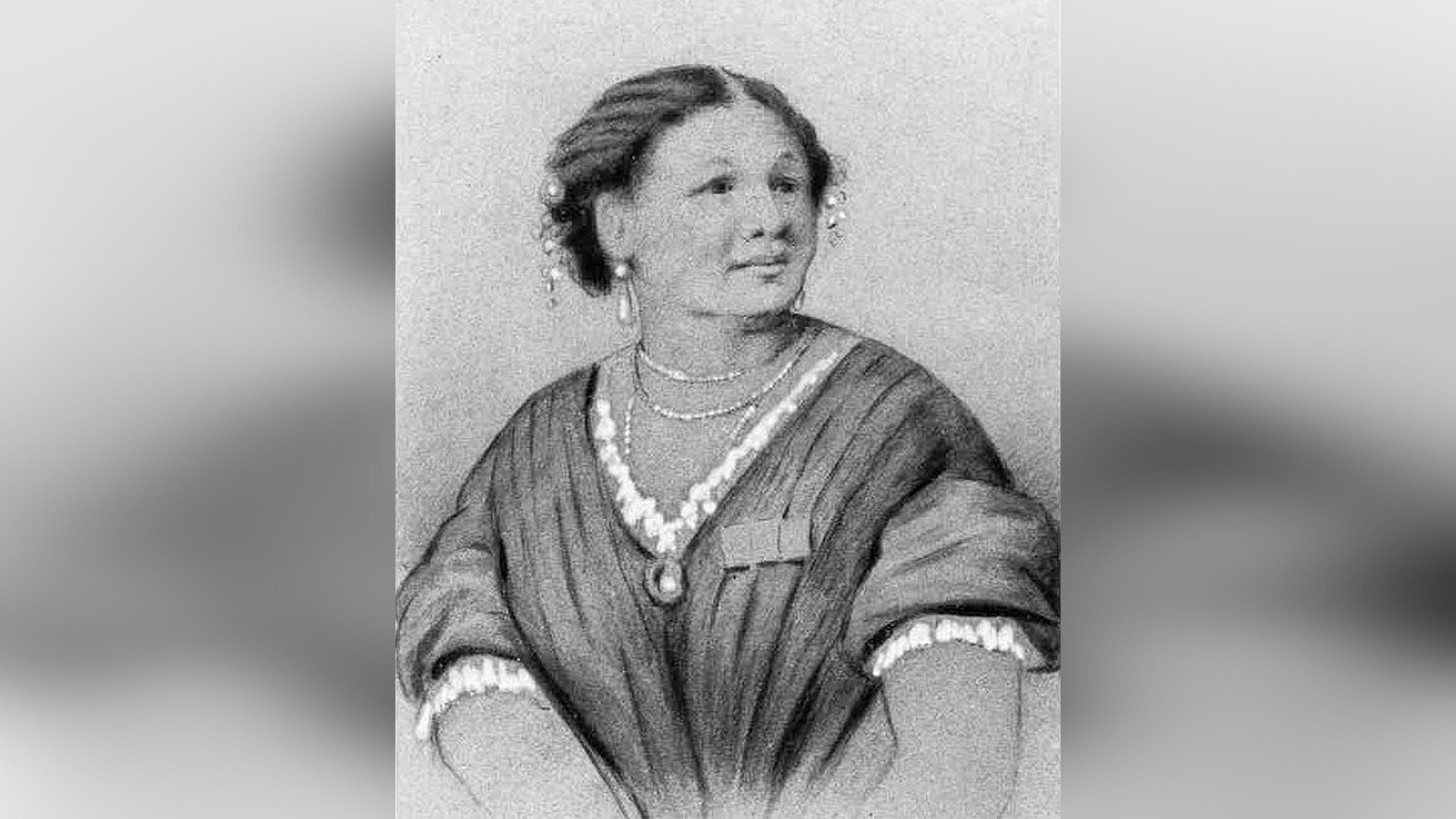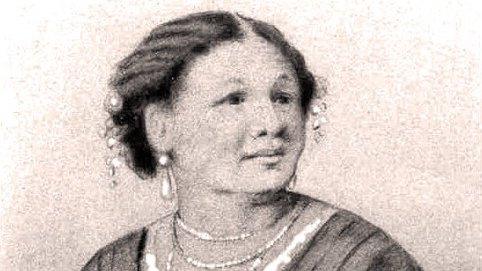Mary Seacole statue vandalism investigated by Met

Paint has been thrown onto the statue which stands outside a central London hospital
- Published
The Met Police is investigating the vandalism of the statue outside a central London hospital of Mary Seacole, a trailblazing19th Century Jamaican-born nurse.
Orange and red paint has been thrown over the memorial statue outside St Thomas', while letters in white graffiti have been daubed across its plinth.
The Mary Seacole Trust said it believed the damage was racially motivated however the Met said it was not being treated as such, but enquiries were continuing.
The memorial statue, which the trust raised money to install it in 2016, is thought to be the UK's first to honour a named black woman.

The statue was found vandalised on Tuesday
Police officers went to the scene on Tuesday morning after receiving reports it had been vandalised.
The force confirmed it had opened an investigation however no arrests have been made.
Trevor Sterling, the charity's chair, said the memorial would be "cleaned and restored to its original design".

The statue of the 19th Century Jamaican-born nurse was unveiled in 2016
Prof Ian Abbs, chief executive of Guy’s and St Thomas’ NHS Foundation Trust, described it as a "disgraceful act of criminal damage".
“Since its unveiling in 2016, the statue has been at the heart of many celebrations and important moments of reflection and remembrance for us at Guy’s and St Thomas’.
“Mary Seacole’s high profile position, overlooking the Houses of Parliament, is a constant reminder of the contribution of our black colleagues, past and present, both to the NHS and wider society.”
Mr Sterling agreed, adding she was “a symbol of the NHS, diversity, and social justice, and her contributions were of real value".
Who was Mary Seacole?

Mary Seacole nursed soldiers under the hail of gunfire
Born in Jamaica to a Scottish soldier and a Jamaican woman in 1805, Mary Jane Grant considered herself a Creole, who had few civil rights - they could not vote, hold public office or enter professions
She learned her nursing skills from her mother, who kept a boarding house for injured soldiers
Married Edwin Seacole in 1836 although he died eight years later
She travelled widely and studied traditional and European medical ideas
In 1854, she travelled to England and approached the War Office, asking to be sent as an Army nurse to the Crimea
She was refused but went anyway. Once there, she established the British Hotel near Balaclava to provide "comfortable quarters for sick and convalescent officers" and also nursed the wounded on the battlefield - sometimes under the hail of gunfire
She became known as "Mother Seacole" and, at the time, her reputation matched that of Florence Nightingale
After the war she returned to England destitute and in ill health
In July 1857 a benefit festival was organised to raise money for her, attracting thousands of people
She died on 14 May 1881
Listen to the best of BBC Radio London on Sounds and follow BBC London on Facebook, external, X, external and Instagram, external. Send your story ideas to hello.bbclondon@bbc.co.uk, external
- Published30 June 2016
